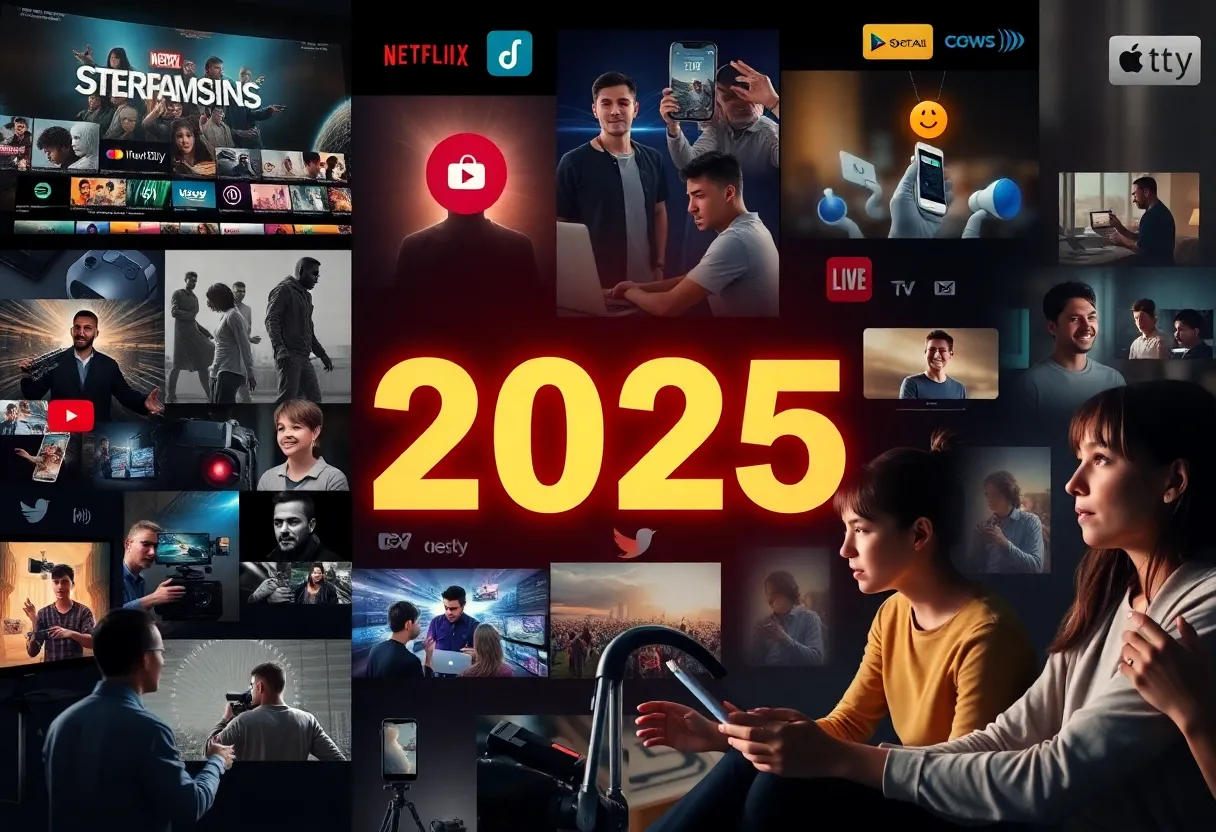News Summary
As we dive into the trends shaping media consumption in 2025, the competition between traditional media and streaming services intensifies. With consumers spending an average of six hours daily on media, advertising shifts towards social video platforms, influencing viewing habits significantly. Traditional studios are feeling the pressure as cable subscriptions decline, particularly among younger generations. The rise of ad-supported streaming tiers and the impact of social media on viewing preferences further highlight the evolving landscape of media consumption. As costs rise and traditional options lose appeal, the need for innovation in media delivery becomes increasingly critical.
2025 Digital Media Trends: A New Era for Streaming and Social Platforms
As we dive into the trends shaping our media consumption in 2025, it’s clear that the battle between traditional media companies and streaming services is heating up. Today’s consumers are spending an impressive six hours a day on media and entertainment. With this time likely not increasing anytime soon, the landscape of how we consume our favorite shows and content is evolving rapidly.
Shifting Ad Spending and Viewing Habits
A key aspect of this transformation is the shifting focus of advertisers. A notable half of all U.S. ad spending is now gravitating toward social video platforms. This trend is a game-changer, as social platforms have begun offering an array of *free content* that appeals to a vast audience, using sophisticated advertising technology. This shift has seen audiences move away from traditional studios, which are facing intense competition.
Interestingly, the decline in pay TV subscriptions shows just how significant this change has been. The numbers tell a story: subscriptions have plummeted from 63% to 49% in recent years. It’s particularly true for younger generations, with 23% of Generation Z and 18% of millennials planning to ditch their cable subscriptions in the next year. Many cite the high costs associated with cable as a big reason, choosing instead to embrace the more affordable Streaming Video on Demand (SVOD) services.
The Economic Factor: Income and Spending Choices
In a world with a median household income of $80,000, many consumers are prioritizing essential spending over those discretionary media subscriptions. As prices for producing content rise, studios are feeling the heat, leading them to consider innovative bundling strategies and collaborations aimed at attracting viewers while striving to keep costs manageable for everyone.
Streaming Services Vs. Traditional Studios
Moreover, traditional studios are grappling with the fact that SVOD services and social platforms are delivering content that is not just more accessible but often more engaging. The innovative storytelling and high production values on these platforms have left many traditional options feeling stale in comparison. With subscriber dissatisfaction on the rise—many expressing frustration over overpriced packages and excessive ads—cable and satellite services continue to lose ground.
On average, consumers report spending around $125 per month on cable services, while opting for just $69 to enjoy four paid streaming services. It’s clear that most are seeking value without the superfluous costs tied to traditional media consumption.
Churn Rates and Content Value Perception
The Rise of Ad-Supported Tiers
To combat this, streaming platforms are beginning to explore ad-supported tier options. In fact, more than half of SVOD subscribers are now using these ad-supported services, which has risen by eight percentage points since last year. This move allows consumers to access content more affordably while still enjoying their favorite shows.
Social Media’s Impact on Viewing Preferences
As the landscape changes, social media’s influence is undeniable, especially among the younger crowd. Both Generation Z and millennials are finding social media ads more relevant compared to traditional advertising. Many say that recommendations for media on social platforms are often better than those provided by SVOD services. It seems that social media’s perceived relevance is taking precedence over traditional content genres like TV and film, especially for younger consumers.
Final Thoughts: Looking Ahead
As traditional media companies continue to face mounting pressure from agile social platforms and innovative streaming services, the need for those companies to innovate is more critical than ever. The competitive landscape is changing, and it will be fascinating to see how these shifts will further evolve as we move deeper into 2025.
Deeper Dive: News & Info About This Topic
HERE Resources
University of South Carolina Baseball Faces Oklahoma in SEC Series
Oklahoma Dominates Game One Against South Carolina in SEC Opener
University of South Carolina Gamecocks Secure Victory Over Morehead State
2025 Academy Awards: Glitz, Glam, and Glitches
Columbia Celebrates Gamecocks’ NCAA Tournament Seeding
South Carolina High School League Basketball Playoffs Begin
UConn Women’s Basketball Shakes Up the Scene in Columbia
South Carolina Gamecocks Triumph Over Tennessee Lady Volunteers
South Carolina Gamecocks Secure Victory Against Tennessee
Columbia Honors Pauli Murray’s Lasting Impact
Additional Resources
- Deloitte: United States Economic Outlook Analysis
- Wikipedia: Social Media
- Deloitte: 2025 Digital Media Trends
- Google Search: Digital Media Trends
- Deloitte: Thriving in Leadership Tension and Uncertainty
- Encyclopedia Britannica: Streaming Media
- Deloitte: Closing the Experience Gap
- Google News: Streaming Services Competition









